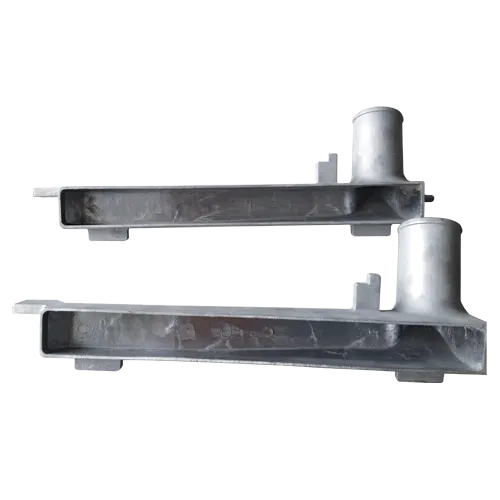Mobile:+86-311-808-126-83
Email:info@ydcastings.com
how to cast aluminum
Casting aluminum is a widely used manufacturing process that allows for the creation of complex shapes and intricate designs. This technique has found application in various industries, including automotive, aerospace, and consumer goods. In this article, we will explore the basics of aluminum casting, the steps involved in the process, various methods of casting, and some tips for achieving high-quality results.
Understanding Aluminum Casting
Aluminum casting involves pouring molten aluminum into a mold to produce a desired shape. The aluminum is heated until it reaches a liquid state, after which it is carefully poured into a mold that contains the negative impression of the final product. Once the aluminum cools and solidifies, the mold is removed, and the cast part is finished through machining or other secondary processes if necessary.
Steps of the Aluminum Casting Process
1. Design and Pattern Making The first step in aluminum casting is designing the part you want to create. This design phase often involves creating a pattern, which is a replica of the final product made from materials such as wood, metal, or plastic. The pattern must account for the shrinkage that occurs when aluminum cools, ensuring that the final product is the correct size.
2. Mold Creation After completing the pattern, the next step is constructing the mold. Molds can be made from various materials, including sand, metal, or ceramics. The mold design will depend on the casting method being used (e.g., sand casting, investment casting, die casting). Each method has its advantages and is chosen based on factors like complexity, precision, and production volume.
3. Melting the Aluminum The aluminum used for casting is typically in solid form and must be melted before pouring. This is accomplished using a furnace, which can be powered by electricity, natural gas, or propane. The temperature needs to reach about 660°C (1220°F) to ensure the aluminum is fully molten.
4. Pouring the Aluminum Once the aluminum reaches the appropriate temperature, it is carefully poured into the mold. This step requires precision to avoid defects such as air bubbles, which can weaken the final product. In some cases, it may involve the assistance of pouring tools or equipment to control the flow.
5. Cooling and Solidification After pouring, the molten aluminum needs time to cool and solidify. The cooling rate can significantly affect the properties of the cast aluminum, including its strength and hardness. Once it has cooled adequately, the mold can be removed.
6. Finishing Processes After the mold is removed, additional finishing processes may be necessary. These processes can include machining to achieve tighter tolerances, surface treatments for improved aesthetics, and quality inspections to ensure the part meets specifications.
Common Casting Methods
how to cast aluminum

- Sand Casting This is one of the most common and cost-effective methods, using sand as the mold material. It is suitable for producing complex shapes and is generally used for lower-volume production.
- Die Casting This method involves forcing molten aluminum into a steel mold under high pressure. Die casting produces parts with excellent surface finish and dimensional accuracy, making it suitable for high-volume production runs.
- Investment Casting This method creates precise and complex shapes using a wax pattern that is melted away. It is commonly used in industries requiring high precision, such as aerospace.
Tips for Successful Aluminum Casting
- Proper Mold Preparation Ensure that the mold is clean and well-prepared to avoid defects in the casting. Use release agents if necessary to facilitate mold removal.
- Control Pouring Temperature Monitor and maintain the correct pouring temperature for the aluminum to minimize defects such as porosity.
- Optimize Cooling Rate Control the cooling rate to achieve desired mechanical properties in the cast part. Rapid cooling can lead to brittleness, while slow cooling may result in undesirable grain structures.
- Quality Control Always perform inspections on the final castings to check for defects or inconsistencies. Using non-destructive testing methods can help identify flaws that may not be visible.
Conclusion
Casting aluminum is an essential process in modern manufacturing that allows for great flexibility and creativity in design. By understanding the steps involved, selecting the right casting method, and following best practices, you can produce high-quality aluminum parts for a wide array of applications. With continued advancements in technology, aluminum casting remains a popular and effective solution in the manufacturing landscape.
-
Why Should You Invest in Superior Pump Castings for Your Equipment?NewsJun.09,2025
-
Unlock Performance Potential with Stainless Impellers and Aluminum End CapsNewsJun.09,2025
-
Revolutionize Your Machinery with Superior Cast Iron and Aluminum ComponentsNewsJun.09,2025
-
Revolutionize Fluid Dynamics with Premium Pump ComponentsNewsJun.09,2025
-
Optimizing Industrial Systems with Essential Valve ComponentsNewsJun.09,2025
-
Elevate Grid Efficiency with High-Precision Power CastingsNewsJun.09,2025











